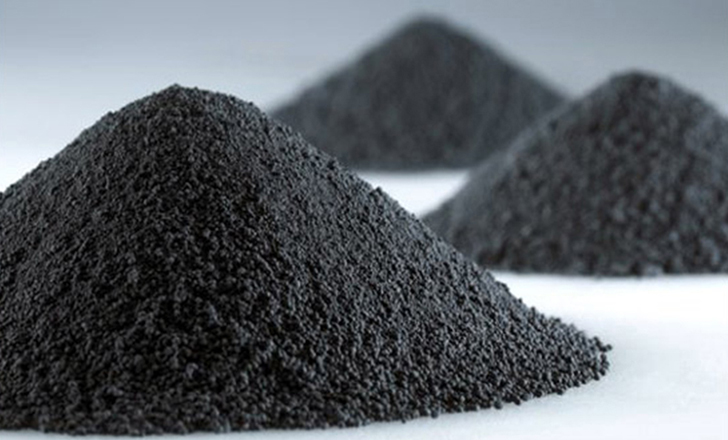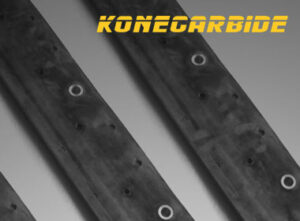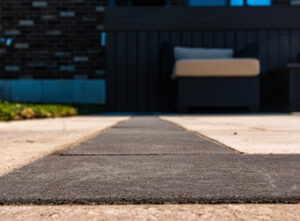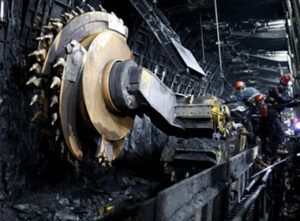The term “tungsten carbide” may sound unfamiliar to some people, but in fact, it is closely related to our daily life due to its wide applications, including jewelry, woodworking, metalworking, packaging, recycling, engineering, art, forestry, and more. Tungsten carbide is a metal alloy with remarkable hardness, strength, and resistance to wear and tear. In this article, we’ll dive into what tungsten carbide is, how it is manufactured, and its benefits and uses.

What is tungsten carbide?
Tungsten carbide, also simply called carbide, is a metal alloy material made from tungsten carbide powder and cobalt binder through the process of powder metallurgy. Tungsten carbide powder (molecular formula: WC) is gray and contains tungsten and carbon atoms. WC powder can be pressed and sintered at high temperatures to form a solid material with excellent hardness and wear resistance. It is the second hardest material in the world, second to diamond. Tungsten carbide can still be stable even when used at a temperature of 1000°.
The hardness of tungsten carbide is determined by the amount of WC and grain size. More WC powder and smaller grain size result in higher hardness. The toughness of tungsten carbide is determined by the amount of cobalt. More cobalt results in higher toughness.
Due to its outstanding hardness, it can be milled or polished with abrasives of superior hardness, such as diamond-coated wheels.
How is tungsten carbide made?
- Select quality and virgin WC powder and mix it with cobalt in a certain proportion.
- Add alcohol or water as a medium to the mixture and put them into a ball mill for intensive mixing and grinding.
- Press and form the mixture into shapes.
- Place these shapes into a HIP sintering furnace to densify the material, gain its properties, and eliminate any potential material weakness areas.
- Grind and polish the sintered tungsten carbide to get a nice finish.
Tungsten carbide grades
Tungsten carbide grades refer to the different chemical compositions and physical properties of tungsten carbide, which can affect its performance in various applications. Tungsten carbide comes in various grades, including K10, K20, K30, and K40, just to name a few. The choice of tungsten carbide grade depends on the specific application requirements, such as the type of material being cut, the cutting speed and feed rate, and the desired tool life.
Advantages of tungsten carbide
- As we mentioned above, tungsten carbide is the second hardest material in the world, making it ideal for cutting other hard materials such as steel, aluminum, etc. Besides, tungsten carbide is highly resistant to wear and abrasion, therefore, it is much more durable and can be used in applications where durability is required.
- Apart from wear and abrasion, tungsten carbide is also highly resistant to heat and corrosion. Thus, it can withstand high temperatures and harsh environments. For instance, tungsten carbide can be used as a drilling tool in the mining and construction industry.
- Even under extreme working conditions, tungsten carbide can be stable in dimension. Its size and shape won’t change much, making it perfect for precision machining.
- Tungsten carbide is an extremely versatile material that can be used in a wide range of industries, from precision cutting tools to oil & gas wear parts. Therefore, it is a very popular material people would love to choose in many industries.
What is tungsten carbide used for?
Generally speaking, tungsten carbide is mostly used in applications where durability and wear resistance are critical. Nowadays, as its popularity increases, it plays a vital role in most industries. Let’s take a look at some examples: precision cutting tools like router bits, boring bits, planer blades, molding knives, circular saw blades, carbide burrs, and annular cutters; mining and construction cutting tools such as road milling teeth, bullet teeth, coal mining bits, and VSI rotor tips; oil and gas wear parts like tungsten carbide hardfacing rods, PDC cutters, tungsten carbide bushings, and tungsten carbide seal rings; snow and ice wear parts such as carbide snow plow cutting edges, snowmobile carbides, and snow tire studs; HPGR wear parts like carbide studs.
KoneCarbide is a reliable supplier of tungsten carbide products. We are experienced in providing tailored tungsten carbide solutions for customers who need our help. If you’re looking for the above products or solutions, please feel free to contact us at: sales@konecarbide.com. Our salespeople will reach out to you as soon as possible.








